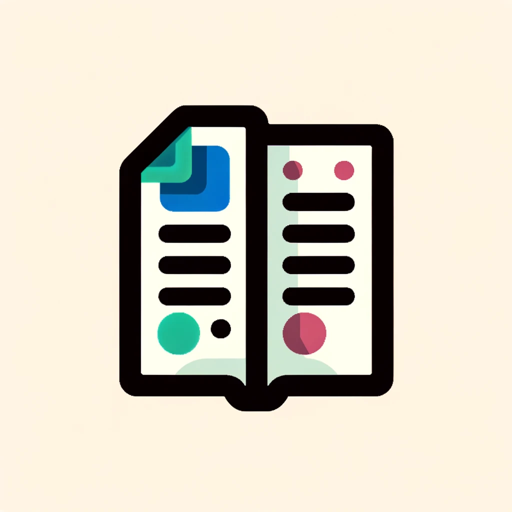Squidshing-AI phishing email detection
AI-powered email and image phishing detection
Is this email safe?
Rate the phishing risk of this message.
Why might this be a phishing attempt?
What should I look out for in suspicious emails?
Related Tools
Load More
NSFW Bot - Don’t take it so hard.
Only for use by adults over the age of 18!

漂流瓶
我用 GPT 的力量帮助每一个人在大海里捞到属于 Ta 的瓶子,我还会把对的瓶子扔到对的人那里,时不时回来问下我是否有新的未读消息。

Stardew Sage
Your go-to guide for Stardew Valley tips and strategies
Daily Dose of Cuteness
Delight in cute animal images - dogs, cats, foxes, and ducks!

Situation Puzzle 海龟汤
Solve situation puzzles with GPT 海龟汤助手

The Deep Dark 2.0
Immersive Underwater Survival Horror Storytelling Roleplaying Game. AI Powered Solo TTRPG. Delve Engine 3.0
20.0 / 5 (200 votes)
Introduction to Squidshing
Squidshing is an advanced AI-based tool designed to analyze emails and identify potential phishing attempts. It leverages a combination of natural language processing (NLP), pattern recognition, and contextual understanding to assess the likelihood that an email is malicious. The primary goal of Squidshing is to help users navigate the increasingly sophisticated landscape of cyber threats by providing a detailed analysis and a percentage score indicating the probability of phishing. For example, Squidshing can scrutinize an email that appears to be from a bank, evaluating aspects like the sender's email address, the language used, and any links or attachments included. By examining these elements, Squidshing can determine if the email is a phishing attempt aimed at stealing personal information.

Main Functions of Squidshing
Email Analysis
Example
Analyzing an email purportedly from a known service provider to detect phishing indicators.
Scenario
A user receives an email from '[email protected]' claiming there's an issue with their account. Squidshing checks the sender's address, language inconsistencies, and suspicious links, providing a phishing likelihood score.
Pattern Recognition
Example
Identifying common phishing patterns in email content.
Scenario
An email states the user has won a prize and requests personal information. Squidshing recognizes the structure and language typical of phishing schemes, flagging the email as suspicious.
Contextual Understanding
Example
Evaluating the context of the email content and the user's interaction history.
Scenario
A user receives an email from their supposed boss asking for a gift card purchase. Squidshing analyzes the email's context and previous communications, determining if this request is out of character and potentially fraudulent.
Ideal Users of Squidshing
Individual Users
People who are cautious about phishing attempts and want to ensure the safety of their personal information. Squidshing helps them by analyzing suspicious emails and providing clear, actionable insights to avoid scams.
Businesses
Organizations aiming to protect their employees and sensitive data from phishing attacks. Squidshing assists by evaluating emails received within the company, reducing the risk of successful phishing attempts and safeguarding corporate information.

How to Use Squidshing
1
Visit aichatonline.org for a free trial without login, also no need for ChatGPT Plus.
2
Upload the email or image containing the suspicious content you want to analyze.
3
Provide any additional context about the email (e.g., sender's address, subject line) to help improve the analysis.
4
Receive a detailed analysis with a percentage score indicating the likelihood of phishing.
5
Review the recommendations and take appropriate actions based on the analysis to ensure your safety.
Try other advanced and practical GPTs
PokeGPT
Discover and Learn with AI-Powered Pokémon Insights

YT transcriber
AI-powered transcription for YouTube videos.

Video Summarizer
AI-powered video summarization made easy

GPT Cookbook Assistant
AI-Powered Assistant for Developers

AstrologyPT
AI-Powered Astrological Insights for You

Automation Consultant by Zapier
AI-powered task automation for efficiency.

shownotes.io
AI-Powered Podcast Transcription Made Easy

Digital Marketing Mentor
AI-Powered Marketing Strategy Tool

Git Repo Analyst
AI-powered insights for your git repositories

AnalyzePaper
AI-powered research paper analysis.

Trap GPT
AI-powered trap culture integration.

ExtractWisdom
AI-powered wisdom extraction tool.

- Image Analysis
- Email Security
- Phishing Detection
- Threat Assessment
- Cyber Safety
Squidshing Q&A
What is Squidshing?
Squidshing is an AI tool designed to analyze emails and images to determine the likelihood of phishing attempts, providing users with a percentage score and actionable insights.
How does Squidshing determine if an email is phishing?
Squidshing uses advanced AI algorithms to examine various elements such as sender information, content, links, and context to assess the risk of phishing.
Can Squidshing analyze image-based phishing emails?
Yes, Squidshing can analyze both text and image-based emails to detect phishing attempts by recognizing suspicious patterns and elements within the images.
Is Squidshing free to use?
Yes, Squidshing offers a free trial that does not require a login or ChatGPT Plus subscription, making it accessible to everyone.
What should I do if Squidshing identifies an email as phishing?
If Squidshing identifies an email as phishing, follow its recommendations to protect yourself, such as not clicking on any links, not providing personal information, and reporting the email to your email provider.